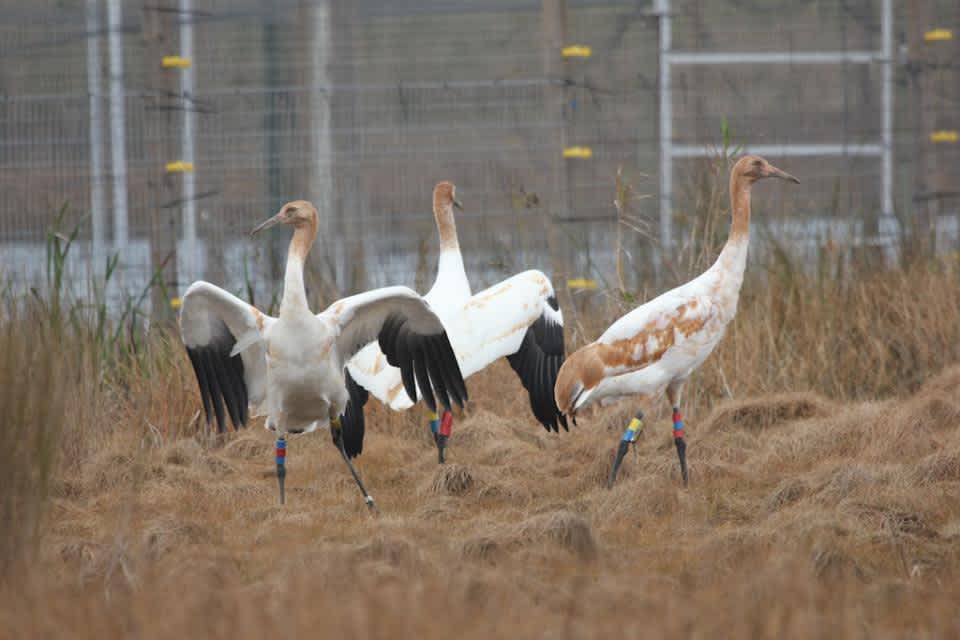Third Cohort of Whooping Cranes Released at Louisiana’s White Lake WCA

The fourteen juvenile whooping cranes delivered to White Lake Wetlands Conservation Area (WCA) in Gueydan last month were released into the wild Monday. The young cranes join fourteen adults which are part of an experimental population being monitored by the Louisiana Department of Wildlife and Fisheries (LDWF).
“We are making history”, said Robert Love, LDWF’s Coastal and Nongame Resources Division administrator. “We are very excited about this new level of progress and with this recent cohort being released into the marsh, the Louisiana population now totals twenty eight. That is more whoopers than existed in this State during the last eighty or so years.”
The cranes arrived in southwest Louisiana on Nov. 29 from the U.S. Geological Survey (USGS) Patuxent Wildlife Research Center in Laurel, Md. LDWF is working cooperatively with US Fish and Wildlife Service, USGS, the Louisiana Cooperative Fish and Wildlife Research Unit and the Louisiana Wildlife and Fisheries Foundation to establish a non-migratory population in the state.
The whooping crane is protected under the federal Endangered Species and Migratory Bird Treaty Acts and by state law. Anyone encountering a whooping crane is advised to observe the bird from a distance.
Whooping cranes are large-bodied, white birds similar to white ibis, white pelicans, and wood storks, all of which must be distinguished from legally-hunted snow geese. However, a red head and black facial markings along with a height of five feet and a wingspan of 7 to 8 feet make them very distinctive. In flight, whooping cranes display black wing tips and fully extended neck and legs, which extend well beyond the tail.
Juvenile whooping cranes are primarily white with some cinnamon-brown feathers remaining on their body, primarily on their head and neck. Their wing tips are black like an adult, but they lack the red head.
Anyone witnessing suspicious activity involving whooping cranes is advised to report that information to LDWF’s Enforcement Division by calling 1-800-442-2511 or using the tip411 program, which may offer a cash reward for information leading to arrests or convictions. To use the tip411 program, citizens can text LADWF and their tip to 847411 or download the “LADWF Tips” iPhone app from the Apple iTunes store free of charge. CitizenObserver, the tip411 provider, uses technology that removes all identifying information before LDWF receives the text so that LDWF cannot identify the sender.
For more information on the re-introduction of whooping cranes to Louisiana, visit LDWF’s website at www.wlf.la.gov.

